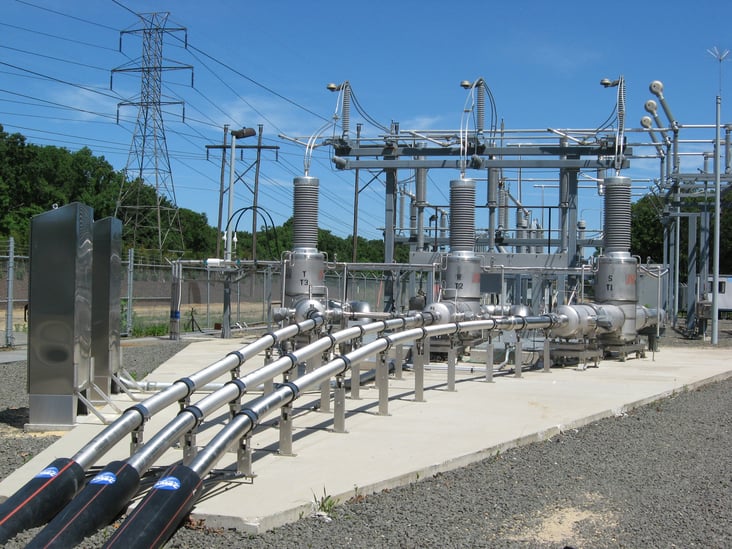This post is one in a series featuring the complete slate of advanced energy technologies outlined in the report This Is Advanced Energy.

Above, Long Island Power Authority (LIPA) is utilizing a cable system manufactured by Nexans that utilizes AMSC’s HTS wire and an Air Liquide cooling system. Energized in April of 2008, this is the world’s first superconductor transmission-voltage cable system and is capable of transmitting up to 574 megawatts (MW) of electricity and powering 300,000 homes.
Superconductivity is a property of certain materials whereby electrical resistance, which normally decreases gradually with decreasing temperature, suddenly drops to zero at a critical temperature, allowing greater current to flow and eliminating resistive losses. Advances in material science have created high-temperature superconductors (HTS), with relatively “warm” critical temperatures of -315°F to -230°F that allow for the use of less expensive and easier to handle coolants such as liquid nitrogen. HTS systems transmit electricity through a superconducting cable that is insulated with liquid nitrogen pumped by refrigeration equipment. This allows HTS cables to carry 10 times the power of a standard cable of similar thickness with almost no losses. These lines can connect directly to the existing AC transmission system to add highly efficient transmission capacity that can relieve congestion without the need for high voltages.
Several utilities have begun to use HTS equipment for projects in urban areas that do not have space for large transmission towers or additional transformer equipment. For example, using technology from American Superconductor and Nexans, the Long Island Power Authority (LIPA) installed a superconducting AC transmission cable with 574 MW of capacity in a right-of-way only one meter wide. Because of the high energy density of the cables, LIPA was able to substantially increase transmission capacity while utilizing existing underground utility conduits. Other utility HTS projects are underway in Albany, New York, and Columbus, Ohio.
The ability of HTS equipment to relieve transmission bottlenecks allows for more efficient operation of the transmission system and more efficient generator dispatch, which saves money by reducing transmission energy losses and allowing more competitively priced power to reach transmission-constrained areas. In addition, because HTS lines do not emit or receive interference, placing transmission lines in close proximity to each other does not hinder their operation or create electromagnetic fields. This means that HTS cables can be packed tightly underground, thus allowing for the use of much narrower rights-of-way, reducing land requirements, minimizing the impact of eminent domain on landowners, and enabling the siting of lines in otherwise dif cult or impossible locations.
Learn more about the full slate of advanced energy technologies in our free report, available for download at the link below:
